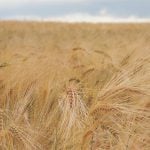The 2010 growing season saw double the historic average precipitation across most parts of Saskatchewan and near triple in some localities. It was welcome coming out of a drought in some areas; not so much in others with ample moisture to start off the season. With a similar scene unfolding this year across many parts […] Read more
Features
Lessons Learned From Wet Hay
Using Summer Annuals To Extend Fall Grazing
Extending the grazing season can help reduce production costs for cattle. Even though about 95 per cent of swath grazing in Western Canada is done with perennial forages, some producers are using summer annuals to extend their grazing period in the fall and winter. Lorne Klein, a grazing and forage specialist with the Saskatchewan Ministry […] Read more
Bale-Grazing Supplementation
One thing that I have learned over the years is that every year is different on the farm. As managers, we need to be flexible and have the ability to adapt to the changes in our lives. One change that I am looking at this fall is supplementation with my bale grazing. First off, as […] Read more
What’s Happening With Biodiesel Supplements?
The research results are due out next spring Canada s biodiesel industry is in its infancy relative to global biofuel production, but it may be hastened along by the federal two per cent mandate on renewable content in diesel fuel and heating oil passed on July 1 of this year with compliance expected by December […] Read more
Practical And Economic Implications Of Feeding Ddgs In Western Canada
Speaking at a special conference this past summer in Lethbridge, Dr. Darryl Gibb, innovation and business development specialist with Viterra at Lethbridge, and Dr. Barry Robinson, nutritionist and owner of Great Northern Livestock Consulting at Westlock, Alta., took a look at the practical and economic implications of feeding dried distillers grains with solubles (DDGS) to […] Read more
Impact Of Ddgs On The Shedding Of E. Coli 0157: H7
In contrast to results from initial studies in the United States suggesting that feeding distillers grain to cattle increases fecal shedding ofEscherichia coli 0157: H7(E. coli 0157)bacteria, a comprehensive project at Lethbridge Research Centre is showing that there is no direct link between the two. University of Lethbridge PhD candidate and research affiliate Jennyka Hallewell […] Read more
Working Together For Beef Quality, Profits
Up, down but never out, the North American beef industry keeps going on optimism in between profitable closeouts. The most upbeat producers are those who see the consumer as final player and have learned to focus on beef with taste and tenderness. Western Feedlots, with locations near High River, Mossleigh and Strathmore, Alta., fits that […] Read more
Cull Those Unproductive Beef Cows
Fall processing is an ideal time to cull problem cows. In early fall prices for beef cows are generally higher than later in the year and calves are being weaned then. But the big savings are on the cost side. The yearly cost to maintain a cow on the Prairies is at least $400, whether […] Read more
Seeking Genes For Robustness
In the not-too-distant future, beef producers may be able to add reduced disease susceptibility, also described as robustness, to the list of beef animal traits when making breeding and management decisions. A study involving the universities of Alberta and Calgary and GrowSafe Systems of Airdrie is moving along nicely into the second year of a […] Read more
M.C. Quantock’s Cow Sale Is A First
Mac and Pat Creech of M.C. Quantock Livestock just north of Lloyminster, have carved a niche for themselves in the Canadian cattle industry as Canada s Bull Supplier selling more than 8,800 purebred and hybrid bulls at some 42 sales they ve hosted through the years. Now, they have put together their first and perhaps […] Read more



